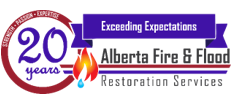Communicating Clearly
Non Verbal Communications and Body Language
Turning Conflict into Cooperation
Dealing with Difficult People & People under Trauma/Stress
Basics of Biology & Pathology for Bio-Hazard Remediation
Biohazard Clean up
Odour Control Seminar
Hoarding I – Unique Aspects of Hoarders
Hoarding II – Not Your Typical Restoration Job
Mitigation and Mould Affected Spaces
Mould Abatement Level II
Removal of Toxic Black Mould
Attending to the Unattended Death
Trauma Scene Remediation Seminar
Forensic Restoration
Fireline/Content Management
Fire & Smoke Seminar
Wildfire & Soot Particles
Asbestos Recognition and Management
Lead Paint: Abatement and Mitigation
Hantavirus Pulmonary Syndrome
Killing Bed Bugs without the use of Pesticides
Meth & Drug House Contamination
Fentanyl Identification & Response Seminar
Silica Abatement
Coming Soon…
Marijuana in the Workplace
Radon Safety Awareness
Call or email us with any questions you may have about a course or registering:
403-204-2259 or training@abff.ca
UPCOMING COURSES:
 Patrick Martens has a long career pathway from high school teacher/principal to an Academic Coordinator at Olds College and an Academic Dean at SAIT. Currently, he is the CEO of an Alberta company that started teaching competency management and safety in the oil and gas industry back in1994.
Patrick Martens has a long career pathway from high school teacher/principal to an Academic Coordinator at Olds College and an Academic Dean at SAIT. Currently, he is the CEO of an Alberta company that started teaching competency management and safety in the oil and gas industry back in1994.
Patrick has Bachelor’s degrees in both Science and Education plus a Master’s degree in Educational Leadership. The Majors in University in Microbiology and Zoology were the prime motivators for his interest in the development of the many bio-hazard seminars that he has developed and delivered for adjusters and property managers. His research and collaboration with the leading environmental researchers in the USA have provided him with the most recent mitigation practices in bio-restoration. This research has extended beyond mould and asbestos and into lead, silica, radon, forensics, cannabis, methamphetamine, fentanyl and many others. The world is changing and it is imperative those in the restoration business stay ahead of the game in keeping your clients and their families safe and healthy.
 In April 2017, the Government of Canada presented the Marijuana Act and introduced amendments to the Criminal Code to make non-medical Marijuana legal in Canada as of October 17, 2018. Government organizations are launching awareness campaigns to educate employers and workers about impairment in the workplace and in the community.
In April 2017, the Government of Canada presented the Marijuana Act and introduced amendments to the Criminal Code to make non-medical Marijuana legal in Canada as of October 17, 2018. Government organizations are launching awareness campaigns to educate employers and workers about impairment in the workplace and in the community.
The legalization of Marijuana in Canada represents a significant change in how we talk about, view, and use Marijuana. What does legalization mean for each of us as members of the business community? What is Marijuana and what are the effects of using Marijuana? This seminar is intended to answer some of your questions about Marijuana, the legalization of Marijuana in Canada and what are the possible health risks of using Marijuana on a regular basis – medicinal or recreational.

It is about time we starting talking again.” With over 90% of communications being NON-VERBAL, it is important for us to be able to “SEE WHAT OTHERS ARE SAYING” and just as importantly to “SEE WHAT WE ARE SAYING”. Our non-verbal actions govern how other people think and feel about us. At the end of this seminar you will be able to identify the appropriate actions that we can use to change our behavior and enhance our performance either in the workplace or the athletic playing field.
 We have all seen or read about hoarders with the recent explosion of media coverage. But hoarding is nothing new. The term “Pack Rat” and “Crazy Cat Lady” has just been replaced with an actual term, “Hoarder”. Hoarding has been occurring for hundreds of years and will continue to be one of the largest disorders to affect our population. In fact, depending on which study you refer to, hoarding affects upwards of 5%-10% of the population. It is difficult to truly know how many hoarders are out there because the clear majority of them go unreported.
We have all seen or read about hoarders with the recent explosion of media coverage. But hoarding is nothing new. The term “Pack Rat” and “Crazy Cat Lady” has just been replaced with an actual term, “Hoarder”. Hoarding has been occurring for hundreds of years and will continue to be one of the largest disorders to affect our population. In fact, depending on which study you refer to, hoarding affects upwards of 5%-10% of the population. It is difficult to truly know how many hoarders are out there because the clear majority of them go unreported.
 As we go through our day-to-day life, we become painfully aware that some people are much harder to get along with than others. Sometimes it can just be a difference in personal style – but sometimes it is more than that. Have you ever known someone who always complains no matter what? Or someone who is consistently over-bearing and angry? We refer to these people as difficult people.
As we go through our day-to-day life, we become painfully aware that some people are much harder to get along with than others. Sometimes it can just be a difference in personal style – but sometimes it is more than that. Have you ever known someone who always complains no matter what? Or someone who is consistently over-bearing and angry? We refer to these people as difficult people.
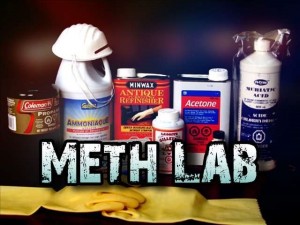 Methamphetamine lab clean up, also known as meth lab clean-up, is often a lot more dangerous to clean up in terms of health risks than most Alberta Fire and Flood projects. The poisons used to make methamphetamine include benzene, methylene chloride, trichloroethane, toluene, acetone, methanol, iodine and hydrochloric acid. These contaminants can cause health problems including respiratory problems, skin and eye irritation, headaches, nausea and dizziness.
Methamphetamine lab clean up, also known as meth lab clean-up, is often a lot more dangerous to clean up in terms of health risks than most Alberta Fire and Flood projects. The poisons used to make methamphetamine include benzene, methylene chloride, trichloroethane, toluene, acetone, methanol, iodine and hydrochloric acid. These contaminants can cause health problems including respiratory problems, skin and eye irritation, headaches, nausea and dizziness.
 The rate of men’s suicides in Alberta is rising at an alarming rate. The primary cause can be traced to job losses that have impacted the oil and gas industry. This seminar will address some of the psychological factors that would lead to an unattended death and the impact on the people left behind.
The rate of men’s suicides in Alberta is rising at an alarming rate. The primary cause can be traced to job losses that have impacted the oil and gas industry. This seminar will address some of the psychological factors that would lead to an unattended death and the impact on the people left behind.
The second part of the seminar addresses the cleanup of the scene of the unattended death. The seminar will address the biological decomposition of the body the bio-hazardous cleanup. This seminar is not designed for those with a weak stomach.
 Where There’s Fire, There’s Soot and Smoke and…
Where There’s Fire, There’s Soot and Smoke and…
Building restoration companies undertake the arduous task of restoring buildings following fire episodes. This activity involves removal and cleaning or disposal of contents, cleaning and partial or full demolition of the structure, and rebuilding. This kind of episode is traumatic for occupants, a truth to which anyone who has attended a fire scene can attest. Project managers easily can find themselves in the middle of disputes between the home or building owner and the insurance adjuster.
 Every home, every building and every vehicle provides the opportunity for odour remediation services. Odours caused from smoke, water, pet problems, cigarette smoke, cooking, skunk, dead animal and bacteria can all be remediated. Millions of dollars in property is replaced every year due to odour problems.
Every home, every building and every vehicle provides the opportunity for odour remediation services. Odours caused from smoke, water, pet problems, cigarette smoke, cooking, skunk, dead animal and bacteria can all be remediated. Millions of dollars in property is replaced every year due to odour problems.
This seminar will teach you how to salvage and restore much of this potentially discarded material. You will be given techniques that will allow you to help your customer without causing them any embarrassment. You will learn the principles of deodorization, the chemicals, equipment and procedures used to permanently remove odours.
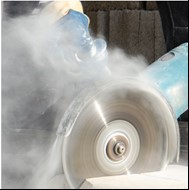 Workers desire healthy and comfortable working conditions. When these conditions are not met, job satisfaction, productivity and health may be compromised. It is important that before you start your renovation or demolition project, you need to know about the hazardous materials that could be present at the worksite. They can pose a danger to your employees, contractors and you. Health and safety are important to everyone.
Workers desire healthy and comfortable working conditions. When these conditions are not met, job satisfaction, productivity and health may be compromised. It is important that before you start your renovation or demolition project, you need to know about the hazardous materials that could be present at the worksite. They can pose a danger to your employees, contractors and you. Health and safety are important to everyone.
In this seminar, we will address only three of the hazardous materials that could potentially invade the worksite. The three that we will cover in this seminar are: Radon, Lead and Silica There are many other hazardous materials in the workplace that one needs to be aware of as well such as mould, asbestos, bacteria, etc. These potentially hazardous materials are addressed in other seminars.
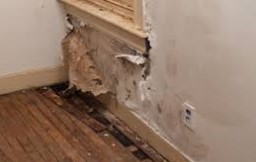 Probably one of the most notorious, yet misunderstood, environmental dangers faced in today’s residential, commercial, and industrial worlds. Despite becoming regulated and largely denounced in the mid-1970s, many property managers and homeowners are still unaware that asbestos is not actually banned from residential and industrial use in several developed nations. The health and litigation risks associated with this deadly material cannot be overstated.
Probably one of the most notorious, yet misunderstood, environmental dangers faced in today’s residential, commercial, and industrial worlds. Despite becoming regulated and largely denounced in the mid-1970s, many property managers and homeowners are still unaware that asbestos is not actually banned from residential and industrial use in several developed nations. The health and litigation risks associated with this deadly material cannot be overstated.
 For the past several decades most of North America was virtually bed bug free. Bed bug infestations had become so rare that many entomologists and pest management professionals had never seen a live specimen, and bed bugs were no longer considered a public health threat. This was due primarily to improved living standards and widespread use of insecticides like DDT.
For the past several decades most of North America was virtually bed bug free. Bed bug infestations had become so rare that many entomologists and pest management professionals had never seen a live specimen, and bed bugs were no longer considered a public health threat. This was due primarily to improved living standards and widespread use of insecticides like DDT.
 The opioid crisis just keeps getting worse, in part because new types of drugs keep finding their way onto the streets. Fentanyl, heroin’s synthetic cousin, is among the worst offenders. In 2015, more Calgarians died from fentanyl overdoes than all the traffic accidents and homicides. The demographic use includes all sectors and all ages. Canada has the highest rate of prescriptions per capita in the world and this could be one of the leading causes of the increases in addictions. In Alberta, it is legal to purchase and import pill presses from Asia and set up shop in your basement.
The opioid crisis just keeps getting worse, in part because new types of drugs keep finding their way onto the streets. Fentanyl, heroin’s synthetic cousin, is among the worst offenders. In 2015, more Calgarians died from fentanyl overdoes than all the traffic accidents and homicides. The demographic use includes all sectors and all ages. Canada has the highest rate of prescriptions per capita in the world and this could be one of the leading causes of the increases in addictions. In Alberta, it is legal to purchase and import pill presses from Asia and set up shop in your basement.
With the dramatic rise in opioid use and production, houses that suffer water damage, sewer backup, fire, etc. could also be affected by either fentanyl production and/or use. It is important that adjusters, restoration technicians and others in the industry learn to recognize an opioid affected house and know the correct response to keep them and others safe.
 How do you respond to the initial phone call from an emotional customer who is very distraught over a fatality that has occurred in their business or residence? When you enter the scene of the fatality how do you respond both physically and mentally? Your reaction can have a very calming effect on the affected parties. In this seminar you will learn that it is important to understand that it is “Not so much WHAT we do but HOW we do it”.
How do you respond to the initial phone call from an emotional customer who is very distraught over a fatality that has occurred in their business or residence? When you enter the scene of the fatality how do you respond both physically and mentally? Your reaction can have a very calming effect on the affected parties. In this seminar you will learn that it is important to understand that it is “Not so much WHAT we do but HOW we do it”.
 Many cleaning and restoration contractors advertise assistance to people in dealing with crime and trauma scene situations. However, the true professionals position themselves to serve all the different specialty areas of the restoration industry that goes beyond crime and trauma projects, such as illicit drug labs, hoarding situations, animal infestations, assisting with the arrest vents of the outbreak of infectious diseases, and even responding to mass casualty events.
Many cleaning and restoration contractors advertise assistance to people in dealing with crime and trauma scene situations. However, the true professionals position themselves to serve all the different specialty areas of the restoration industry that goes beyond crime and trauma projects, such as illicit drug labs, hoarding situations, animal infestations, assisting with the arrest vents of the outbreak of infectious diseases, and even responding to mass casualty events.
Having the know-how to be able to apply regulatory guidelines to categorize specific jobs as the complexity and size of the project expands means that individuals who incorporate forensic restoration guidelines into their business are truly industry leaders.
Learning about the guidelines means that if the day comes when your organization receives a call about a situation with the following details no one on your team has to wonder “are we really prepared to deal with this?”
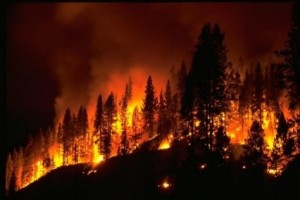 According to a 1994 scientific study prepared for the Fire and Aviation Management division of the U.S. Department of Agriculture Forest Service, contaminants of forest fire smoke can include carbon monoxide, hydrocarbons, benzo[a]pyrene, nitrogen oxides, volatile oxygenated organic compounds, acids, ketones, alcohols, and aldehydes, among other chemicals.
According to a 1994 scientific study prepared for the Fire and Aviation Management division of the U.S. Department of Agriculture Forest Service, contaminants of forest fire smoke can include carbon monoxide, hydrocarbons, benzo[a]pyrene, nitrogen oxides, volatile oxygenated organic compounds, acids, ketones, alcohols, and aldehydes, among other chemicals.
Wildfires depend on different types of wood and vegetation for their fuel. The fuel of wood and brush are composed of varying amounts of cellulose, lignin, tannins and other polyphenols, oils, fats, resins, waxes, and starches that produce different chemical compounds. Surprising to some people, even brush, trees and the burnt ground can release toxic smoke in air.
A hotter wildfire will convert more fuel into elemental carbon, which forms into tiny particles that absorb light and appear in the sky as black smoke. A cooler wildfire combustion—or one that doesn’t work as efficiently—yields less-pure forms of carbonized particles. Cooler combustion conditions tend to reflect light easier, thus, making the smoke to look white.
The wildfires in Fort McMurray last summer and an inspection of the subsequent remediation process demonstrated that many of the technicians required a seminar on how to clean affected buildings and content.
 The Applied Structural Drying Process seminar is designed to teach the effective, efficient and timely drying of water-damaged structures and contents, using classroom and hands-on training, in order to facilitate appropriate decision making within a restorative drying environment.
The Applied Structural Drying Process seminar is designed to teach the effective, efficient and timely drying of water-damaged structures and contents, using classroom and hands-on training, in order to facilitate appropriate decision making within a restorative drying environment.
Structural drying is a high priority restoration activity of any water damage which affected a building’s structure or base materials. Prompt and efficient drying is required to minimize damage to the building and prevent ongoing damage or future black mould growth. Correct structural drying will also be key to decreasing water damage restoration costs in the long term.
This seminar will review how our non-verbal behaviour affects how other people see us and how we see ourselves. How can we change our body language to get the promotion we want or the job we want?
How safe is your home and workplace? Are we becoming sensitized to mould and how can it affect our health? Are we mould-phobes or are we mould-minimizers?
Hydroxyls are seen as nature’s way of cleaning up the atmosphere. This seminar will reveal how hydroxyl ions and ozone molecules work to make our air healthier for us to breathe.
Pathogenic microorganisms are present in human blood or other potentially infectious materials and can cause life-threatening diseases in humans. It is important that the front line workers are aware of the dangers posed by exposure to these blood-borne pathogens and how to mitigate the hazards in order to control the spread of infectious diseases.
The rate of men’s suicides in Alberta is rising at an alarming rate. The primary cause can be traced to job losses that have impacted the oil and gas industry. This seminar will address some of the psychological factors that would lead to an unattended death and the impact on the people left behind.
The second part of the seminar addresses the cleanup of the scene of the unattended death. The seminar will address the biological decomposition of the body the bio-hazardous cleanup. This seminar is not designed for those with a weak stomach.
Probably one of the most notorious, yet misunderstood, environmental dangers faced in today’s residential, commercial, and industrial worlds. Despite becoming regulated and largely denounced in the mid-1970s, many property managers and homeowners are still unaware that asbestos is not actually banned from residential and industrial use in several developed nations. The health and litigation risks associated with this deadly material cannot be overstated.
This seminar will provide the participants with a better understanding of why people hoard and how we can try to understand and assist them on their road to recovery.
(PRE-REQUISITE: HOARDING I)
It is estimated that thousands of people in Calgary and area suffer from compulsive hoarding. These cases create business opportunities for remediation professionals, but they also pose unique health and safety hazards for the property owner and the contractor hired to restore the property. For the safety of the client and your employees, it is important to understand how and why every hoarding case should be treated as a biohazard. Before committing to any hoarding job, a restoration company must provide the proper biohazard training and equipment for employees or choose to form a partnership with professionals who specialize in this type of bioremediation.
This seminar reviews the physiological and anatomical changes that occur in the human body after death. After death, the human body will typically decompose in a particular predictable fashion, though inevitably subject to a number of variables. To a degree the extent of decomposition can be used to estimate time since death, though an estimation is all this can be, as there is no infallibly scientific means of determining the post-mortem interval.
How do you respond to the initial phone call from an emotional customer who is very distraught over a fatality that has occurred in their business or residence? When you enter the scene of the fatality how do you respond both physically and mentally? Your reaction can have a very calming effect on the affected parties. In this seminar you will learn that it is important to understand that it is “Not so much WHAT we do but HOW we do it”.
In today’s world of saving the environment and our landfills, it is important we make every attempt to “RESTORE AND NOT REPLACE”. The goal of the new Content Management System would be to restore the affected contents to the same pre-existing condition or better and save both the insurance company and the customer money in addition to reducing the environmental impact. The seminar would demonstrate the cleaning principles behind the new Fireline system in addition to getting a “hands-on” experience in the cleaning process.
